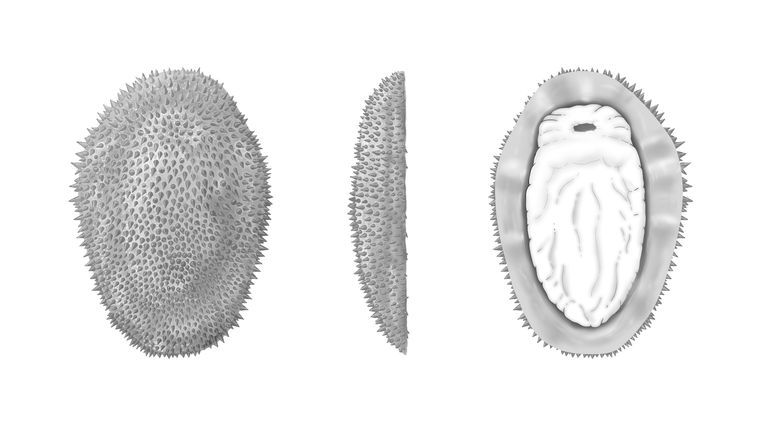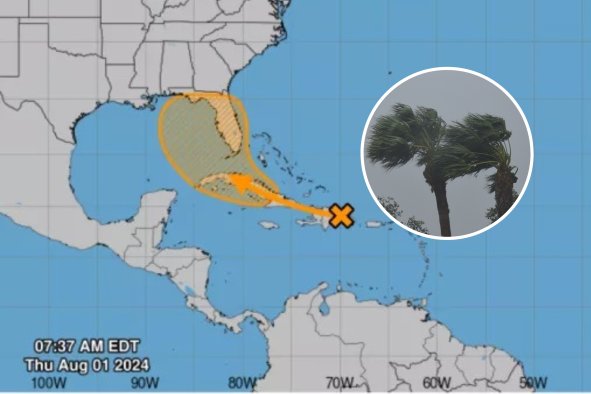Our grasp of how stars rotate is "insufficient," with implications on our ability to understand the causes of phenomena on the sun like solar flares and coronal mass ejections that cause aurora and geomagnetic disruptions here on Earth.
This is the conclusion of a team of astronomers from the University of Helsinki who found that a nearby star has a rotational profile radically different from the sun.
V889 Herculis lies just 115 light-years away in the constellation of Hercules. In most respects, it is like a younger version of our host star—being "just" 50 million to the sun's mature 4.6 billion years.
However, while the sun rotates fastest at its equator and slowest at the poles, V889 Herculis rotates fastest at 40 degrees (equivalent to the latitude of Philadelphia on Earth), while both its equator and polar regions rotate more slowly.
Such an astonishing phenomenon has not even been predicted in computer simulations—calling into question what we know about a fundamental physical parameter of stars that scientists had considered to be well understood.
"We applied a newly developed statistical technique to the data of a familiar star that has been studied at the University of Helsinki for years," paper author and astronomer Mikko Tuomi said in a statement.
He continued: "We did not expect to see such anomalies in stellar rotation. The anomalies in the rotational profile of V889 Herculis indicate that our understanding of stellar dynamics and magnetic dynamos are insufficient."
Unlike Earth and many other planets, stars do not have solid surfaces. Composed of plasma—charged matter—they live and die on the balance between the outward pressure of the nuclear reactions in their cores and their own gravity trying to collapse them inward.
As hot plasma rises to a star's surface by convection (like blobs in a lava lamp), it also has an effect on the local rotation rate on the surface.
This is because angular momentum must be conserved, and the plasma rising near the poles is rising along the rotational axis, but perpendicular near the equator.
Accordingly, if all else was equal, plasma should be rotating faster at the equator than the poles. This variation is what physicists call "differential rotation."
There are many other factors that can alter a star's rotation profile—including its age, chemical composition, mass, magnetic field and rotational period.
Until now, the sun has been the only star for which it has been possible to extract a rotational profile, given the distance of other stars.
In their study, however, Tuomi and colleagues were able to determine the profiles of two stars—V889 Herculis and LQ Hydrae, which lies 59.6 light-years away in the constellation of Hydra—by applying a new model to decadeslong observations of their brightness.
The pair were chosen in part because we have such long-running observations of them, but also because they rotate very rapidly (evolving once around every 1 1/2 days) and are young, giving them large spots.
By tracking how the movement of large numbers of these spots on the stars' surfaces affect their apparent brightness, the team was able to model how fast the bodies were rotating at different altitudes.
"This was about a game of numbers," Tuomi told Newsweek. "We need observations of as many rotation cycles, starspots coming in and out of view as the star rotates, as possible.
"Some thirty years of data for both starts enabled us to see thousands of rotation cycles. That made the work possible."
The team found that LQ Hydrae is spinning much more like a solid planet, with little difference between the rotation at the equator and the poles.
In contrast, Tuomi said, V889 Herculis has a very unexpected rotational profile, one that is qualitatively different to the sun's.
"Was the sun like one of these stars in its youth? We cannot tell, because we don't know what causes the rotational profiles to be so different.
"This is a deep question about stellar astrophysics, the inner workings of stellar magnetic dynamos, but we cannot really produce an answer at the moment."
Unraveling this mystery is important in part because it will help us better understand the behavior of solar activity like sunspots and eruptions that can affect us here on Earth.
"The rotational profile is really a surface feature encoding plenty of information about the inner workings of the star—its magnetic dynamo, convection, and movements," said Tuomi.
"The differential rotation ultimately creates twists and loops into the local magnetic field, and they store magnetic energy.
"When this energy is released, eruptions occur. Changes in differential rotation then cause changes in eruption patterns, their strength, and frequency.
With its initial study complete, the team is now planning to apply its new technique to a larger number of stars, with the goal of determining if there are overall laws that might govern what the rotational profiles look like for different stars.
"We are staring at the edge of scientific knowledge here. Whatever we find will be new to science," Tuomi concluded.
The full findings of the study were published in the journal Astronomy & Astrophysics.
Do you have a tip on a science story that Newsweek should be covering? Do you have a question about astronomy? Let us know via science@newsweek.com.
Disclaimer: The copyright of this article belongs to the original author. Reposting this article is solely for the purpose of information dissemination and does not constitute any investment advice. If there is any infringement, please contact us immediately. We will make corrections or deletions as necessary. Thank you.



